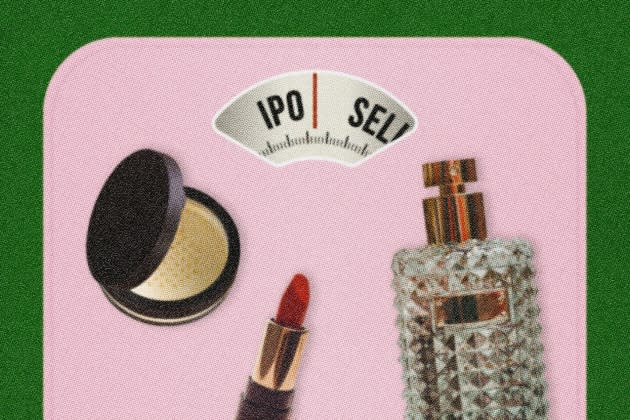Beauty Companies Weigh IPOs

In a very hot beauty M&A market, an increasing number of brands find themselves weighing some new exit options.
In a major shift from days past, the public markets have become a viable home for beauty businesses. Consider Olaplex, which debuted on the Nasdaq at more than $24 per share in September, valuing the company at more than $15 billion. Or European Wax Center, which went public in August at more than $21 per share, valuing the specialty services business at more than $1 billion.
More from WWD
There’s also the special purpose acquisition company option, which several beauty and grooming companies have taken. Waldencast Acquisition Corp. signed a deal valued at $1.2 billion to buy Milk Makeup and Obagi in November, and Bright Lights Acquisition Corp. plans to combine with men’s grooming and personal care business Manscaped, also at a $1 billion valuation. Both businesses will land on the Nasdaq and become publicly traded once the transactions close.
“In beauty, specifically, there’s been a lot out there, there’s been a lot of strategic deals…the sector is growing faster and fostering more successful companies than it would be possible for the five major consolidators to acquire. As these businesses reach scale, they’re going to look for other means to drive liquidity and create value for shareholders,” said Shaun Westfall, managing director at Jefferies.
“The public markets are a really great alternative for some companies, not all companies,” said Vennette Ho, managing director at Financo Raymond James. She noted that companies need to have at least $50 million in earnings before interest, taxes, depreciation and amortization before they consider going public — but having closer to $100 million in EBITDA is preferable.
Lauren Leibrandt, a director in Baird’s consumer practice, said companies should only consider going public if their enterprise value would be at or north of $1 billion.
“When you look at the landscape of brands out there, there’s very few scale brands that fit that type of valuation profile,” Leibrandt said. “Typically when brands get to be a certain scale and size, they come to find a home in the portfolios of some of the larger beauty players. That’s been historically a very lucrative outcome — the strategics have been paying really rich valuation multiples.”
Indeed, the financial path for most beauty companies used to be: bootstrap or secure venture funding, possibly consider a private equity backer to scale, and then sell the company to L’Oréal, Estée Lauder or another big beauty firm. But today, many beauty organizations are thinking through the IPO path — especially the ones that have business models that don’t clearly fit in a strategic home.
Leibrandt said multiunit service businesses, like European Wax Center, work well on the public markets because of their predictability. When companies open more locations, it’s “just a math exercise,” for those tracking, she said.
“If there isn’t a perfect fit but it has a lot of growth and it has a lot of EBITDA, the public markets are a great place to get capital and get liquidity,” Ho said. “It’s a great place for companies that are fabulous businesses that aren’t a perfect fit for a strategic [buyer].”
But single-branded beauty companies do not always have that predictability, and have not always fared well on the public markets. E.l.f. Beauty, which went public in 2016, saw its stock price stumble at one point, and quickly had to revamp the plan — including closing owned stores, focusing on core categories and reimagining the line on shelf — to regain its footing. Now, E.l.f. Is a more diversified, multibrand business, with stock trading in the $30 range.
“Investors in the public markets like consistency and like predictability,” Leibrandt said — but beauty brands aren’t always that predictable, she noted. “How do you provide guidance to the street? How do you know how your new products are going to do?”
That need to report in to shareholders is “not a decision to be taken lightly,” Ho cautioned. “Your home becomes the public markets and you become beholden to quarterly reporting, to shareholders.”
She also noted that that may make it more difficult for some beauty companies to make long-term strategic decisions. “The downside is, if you want to make a really big investment to grow the business and it takes your numbers down temporarily — it’s hard to make big changes,” Ho said.
For companies who are not daunted by reporting or size requirements, Westfall said businesses should ensure potential for long-term sustainable earnings growth and the credibility of their management team, before they go public.
“There’s going to be some interesting platforms that come out that have made some acquisitions, and there isn’t necessarily a natural strategic buyer for a platform, and maybe here or there some single brand situations,” Westfall said.
Generally, it’ll be those companies backed by major private equity players, like Advent, which backed Olaplex, that consider IPOs for their companies, over beauty businesses backed by mid-market firms, Ho said.
“Small private equities aren’t usually growing businesses until they hit $100 million in EBITDA. They’re usually looking to exit at lower levels than that,” she said.
Unless, they want to join one of the available SPACs, Ho said, like Waldencast of Katherine Power’s Powered Brands. “Those two are interesting options and alternatives for companies that have lower EBITDA because you’re rolling into a platform and IPO-ing via a platform.”
For more from WWD.com, see:
How Grooming Is Introducing Men to Self-care and Redefining Masculinity
Updated: All the Beauty M&A Deals of 2021
Sign up for WWD's Newsletter. For the latest news, follow us on Twitter, Facebook, and Instagram.
